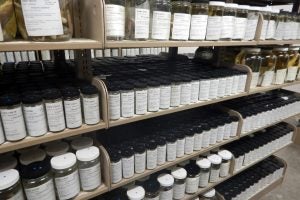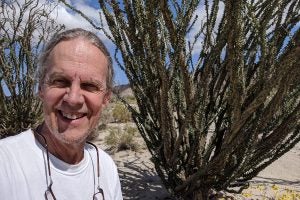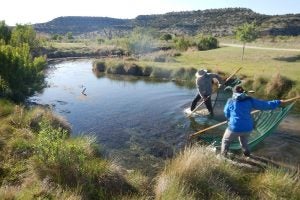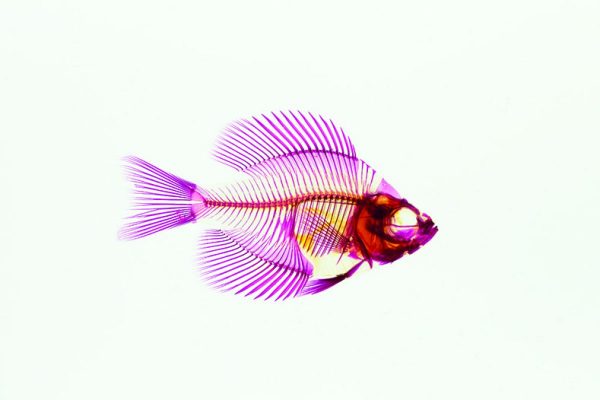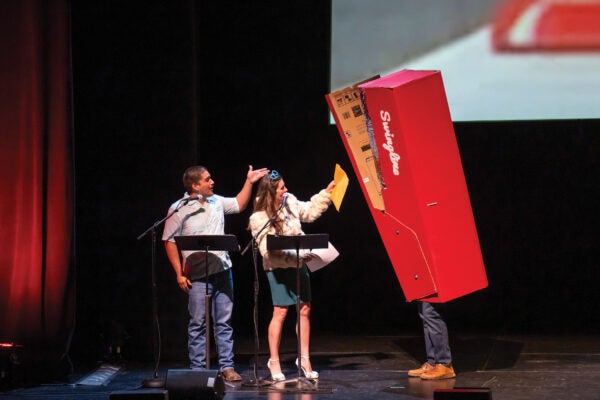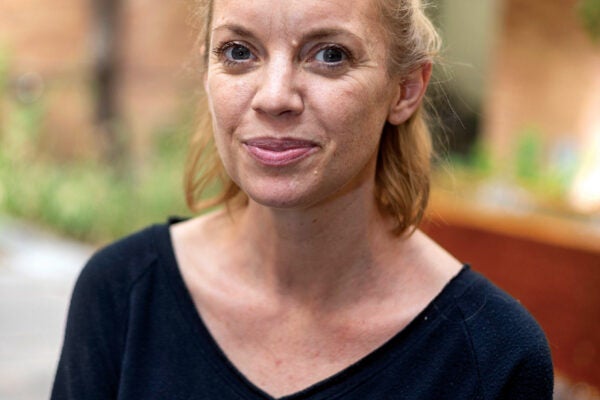The University of Texas’ ichthyology collection spans two rooms in a warehouse-like building at the J.J. Pickle Research Campus and includes more than 1.5 million fish specimens, encased in jars of alcohol and arranged on shelves. Researchers can check out specimens just as they would books from a library, collection curator Dean Hendrickson says.
“We get requests for specimens from all over the world,” he says. “They have to be pulled off the shelves and then packed up and shipped out.”
Hendrickson has overseen the collection, which is made up mostly of specimens from Texas’ roughly 280 native freshwater fish species, for more than 30 years. His job consists of growing the collection and focusing the directions in which it develops, as well as conducting his own research with the collection and promoting the research of others.
Hendrickson first became interested in fish when he was a kid living in central Arizona. He spent lots of time fishing and kept tropical fish in aquariums. Every couple of years, his uncle — then a professor in Malaysia and a zoologist — would come visit.
“He got me thinking beyond just catching fish and thinking about the fish and the ecosystem in which they live,” Hendrickson says. “That was clearly very influential.”
He went on to major in biology at Arizona State University, where he decided on a career studying fish.
“I kind of clicked with the fish biologists there, and that was it,” Hendrickson says. “It was like, ‘Wow, OK, now I know exactly what I want to do.’”
He spent a couple of years as a Peace Corps volunteer in Colombia, working in fisheries management, then obtained his master’s degree in applied hydrobiology at the University of London. After earning his doctorate at Arizona State University — while simultaneously serving as the native fish biologist for the state — he took the curator job in Texas in 1990.

Hendrickson and a handful of other staff members make up the Hendrickson Lab, based at the research campus warehouse. The lab’s operations normally include fulfilling researchers’ requests for specimens from the collection’s “library,” but the handling of specimens has pretty much halted during the pandemic because of an absence of in-person volunteers.
“It’s a very different world these days,” he says.
On a typical day pre-COVID-19, the warehouse would be filled with a dozen or more people, including students and retirees from places such as the Texas Parks and Wildlife Department who wanted to volunteer. Now, no more than four main staff members are ever in the building.
The lab has shifted to focus on other tasks, including a project led by ichthyology collection manager Adam Cohen in which volunteers remotely help comb through various fish collectors’ field notes for information about where fish have been observed. The data will be added to the Fishes of Texas online database — fishesoftexas.org — which makes information from UT’s ichthyology collection and fish specimen information from other institutions available to the public.
Hendrickson says the pandemic has allowed him the time he needs to take a deep dive into a research project surrounding two blind catfish species that are found only in the Edwards Aquifer, an aquifer in south Central Texas that provides most of San Antonio’s drinking water and, in another segment, feeds Austin’s Barton Springs.
He’s helping the U.S. Fish and Wildlife Service reassess the conservation status of the two species by sifting through old data collected on them.
“They’re precious specimens. There’s almost nothing known about them because they’re so difficult to get,” Hendrickson says. “They come from a thousand meters under the city of San Antonio — like 3,000 feet straight, literally, under downtown.”
A specimen of one of the blind catfish species, Satan eurystomus, was last collected in the 1980s. Specimens of the other species, Trogloglanis pattersoni, continue to be collected, but they are rare and found only when they float up from one of the aquifer’s deep wells.
Hendrickson has been using online sources such as maps, old newspaper stories, and census and property data to validate findings or correct errors about where specimens of the catfish were collected. The work could help him test his hypothesis that Satan eurystomus has gone extinct and that the other species is likely more endangered now because of the pumping of aquifer water to the surface.
“It’s challenging, specifically because the information is old and it has to do with very rare fishes in incredibly difficult to access habitats,” Hendrickson says. “We’re doing the best we can to rigorously assess (the fishes’) conservation status in the face of lots of uncertainties about that.”
